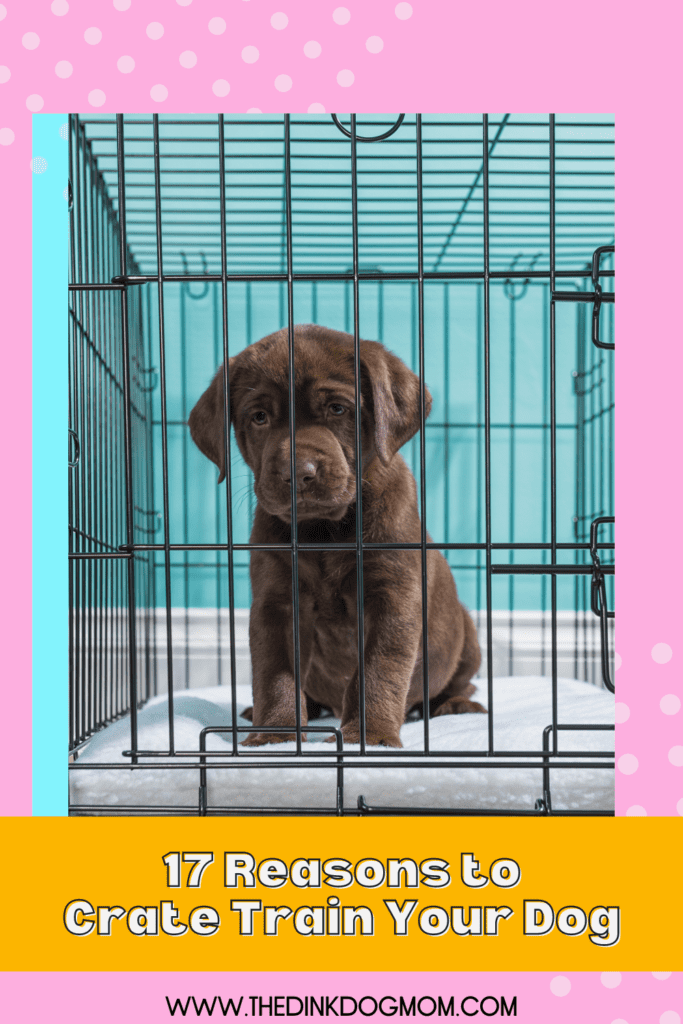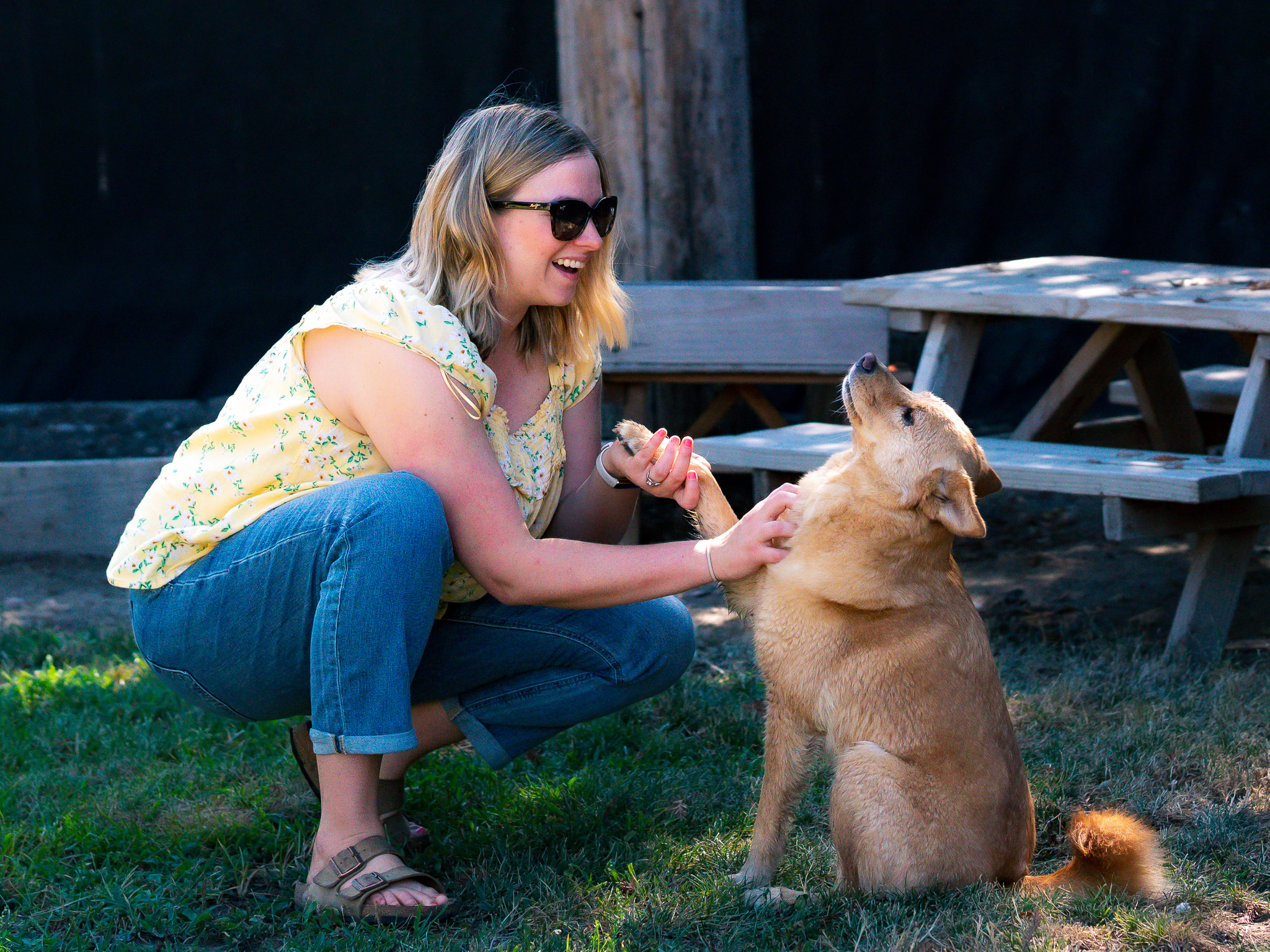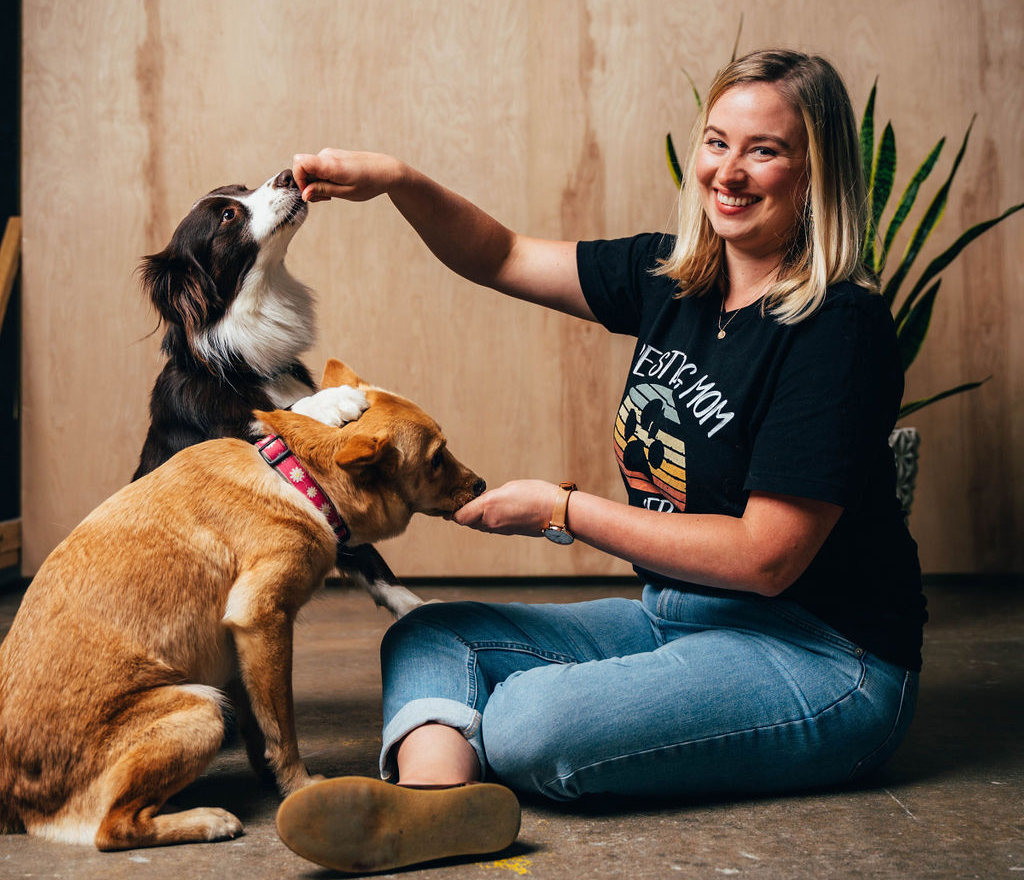Crate training a dog. It’s one of the more controversial topics in the dog world, and you have people who will die on their hill on both sides of the fence. In my opinion, crate training is one of the most valuable tools you can teach to keep your dog safe. But, it’s not a flat out requirement for all dogs, and it can even be a very negative thing for some dogs.
Nevertheless, I would argue that positively crate training a dog is extremely advantageous in helping your dog navigate the modern human world. When you take the time to ensure your dog is comfortable and happy in a crate, you and your dog are prepared to handle a wide array of situations, which I will cover below. But, if your dog struggles with behavior challenges (like separation anxiety) or finds the crate aversive, I would recommend against it (and working with a professional dog trainer!).
That said, here are 17 reasons you should take the time to positively crate train your dog:
1. Crate Training Can Be Good for Mental Health
Have you ever walked by someone’s home and heard the dog inside go absolutely ballistic? This happens every time I take a walk with the girls. In fact, it happens on almost every street we walk down. This level of agitation is not healthy. The barking dog might be afraid or stressed out hearing someone walk by, or maybe they are super excited. Either way, letting your dog go nuts every time they hear or see someone walk by can negatively impact their mental health and lead to a lot of stress and anxiety. It is much better for a dog to be calm and relaxed inside their crate.
2. Crate Training Helps Prevent Accidents
Crate training a puppy is one of the easiest ways to potty train. The same is true for older rescue dogs who might require potty training. Dogs instinctively do not like to use the bathroom where they sleep, so you can use a crate as a tool to avoid accidents when you aren’t around to supervise (please note, it is crucial to do this humanely and not expect your dog to hold their bladder for hours on end, especially puppies).
Additionally, crating your dog while you are unable to supervise them ensures they don’t do something dangerous, like chewing on a power cord or getting into the garbage and eating something toxic. Crates help help your dog safe while you are gone!
3. Crate Training Helps First Responders Rescue Your Dog During an Emergency
Unfortunately, accidents happen. It’s scary to think about, but you never know when a fire or other emergency might take place while you are not home. Should something like this happen, a crate can make all the difference when it comes to whether or not an emergency responder like a fire fighter can safely evacuate your pet.
Not only does having your dog crated mean a first responder can quickly locate and remove your pet from a situation, but they can do so safely without risking a dog bite or a dog escaping in all the frenzy.
4. Crate Training Keeps Your House in One Piece
This might be the most obvious reason to crate train your dog. A dog can’t eat your shoes or pee on your bed if they are secured safely in their crate. This is especially important when you first bring home a new dog, whether that’s a puppy or an older dog.
Oh, and the same logic applies to leaving a dog in your car unsupervised. A crated dog can’t eat your steering wheel.
5. Crate Training Can Help with Reactivity and Overstimulation
If your dog tends to go bananas when you get home, when guests come over, when you are out on walks, etc., then crate training might just be your new best friend! It may seem counterintuitive that a dog “cooped up all day” in a crate would actually be calmer than a dog left out, but hear me out!
A dog with proper crate training learns to rest and relax in their crate while you are at work. Seriously, when I’m working from home and the girls are crated, they totally zen out after just a few minutes. This is so much better for a dog’s mental stability than barking at the window all day.
6. Crate Training Gives Your Dog a Safe Space
When properly crate trained, dogs can feel safe and secure in a cozy space like a covered crate. This can help tremendously during stressful situations like fireworks, thunderstorms, construction, etc. It also means you have a safe space to keep your dog out from underfoot as needed, whether you are cleaning the house or hosting a party.
Many dogs, like Margot and our old man Totes, eagerly go into their crates whenever they need a quiet space, whether they are seeking refuge from noise and commotion or they just need a place to nap. Other dogs, like June, don’t necessarily hang out in their crates, but they can still benefit from a quiet, safe space when needed.
7. Crate Training Helps with Recuperation from Illness or Injury
Similar to bed rest, “crate rest” is an important part of helping your dog heal. It’s hard to explain to a dog that they can’t run around or jump on furniture, so sometimes they need to be confined to a crate so that they can rest and allow their bodies to heal. If your dog is already crate trained, then crate rest is no problem! All it takes is a few extra busy toys to keep them entertained while they heal and recover.
However, if your dog is not crate trained, then crate rest can be a challenge. Your dog is likely already stressed if they are injured or sick, and it will only add stress when you try to force them into a crate.
8. Crate Training Helps your Pets Travel
Just about every hotel or AirBnB you visit will require your dog to be crated if you leave them in the room unattended. If your dog is crate trained, this isn’t an issue. Plus, the crate gives your dog a safe and familiar place to hang out when in a strange environment. This can alleviate problem behavior like barking, and helps your dog feel comfortable in new places.
Plus, dogs often have to be crated if you travel by plane, train, bus, or another form of public transportation. A crate is also the safest way to travel with a dog in the car.
9. Crate Training Makes Boarding/Pet Sitting Easier
Leaving your pet behind when you go on vacation can be hard, but it’s much easier when you know they are safe and well cared for. If you board your dog, crate training can ensure they are comfortable in a kennel environment. And, if your dog gets to go stay with family or friends while you are away, a crate gives them a familiar place to hang out in. Plus, your family or friends don’t have to worry about your dog having an accident or chewing on something they shouldn’t.
Even if you hire a pet sitter to come to your house and care for your dog, crate training helps by providing a familiar routine for your pet while you are away.
10. Crate Training Keeps Messy Treats Contained
Stuffed toys, raw marrow bones, bully sticks, and other yummy treats can be a gross mess. I mean, I don’t know about you, but I definitely don’t want wet bull penis on my couch. Crates are a great place for pets to enjoy these treats, because the mess is contained and it’s easy to clean up afterwards. Bedding can be washed, and the crate itself can be sprayed and wiped down.
11. Crate Training Provides Boundaries
We all need boundaries, and this is true for dogs as well. Sometimes you need a safe space to contain your dog. Maybe you are cleaning or you have a house guest over who is afraid of dogs. Or, maybe you’ve just had a really long day and need some space. Crates are perfect for these occasions! On the other hand, maybe your dog needs a place to retreat to where they won’t be bothered by kids, humans, or other pets. Crates can provide that space and offer your dog boundaries from whatever might be bothering them.
12. Crate Training Helps with Aging
As dogs get older, they can suffer from a variety of problems, including canine cognitive dysfunction, arthritis, impaired vision or hearing, etc. Crates offer aging dogs a comfortable, familiar, and safe space to rest their weary bones. Orthopedic crate mats offer support for joints, and the confinement of the crate can help prevent accidents when you aren’t around to supervise. Plus, crates offer a space for older dogs to find some peace and quiet. For example, our old man Totes frequently goes into his crate when the girls (namely Margot) start to annoy him, because he knows that’s his space and he can nap there in peace.
13. Crate Training Can Help a Dog Settle
Teaching an off switch can be hard. A big part of this is achieved through physical and mental exercise. It is vital that you meet your dog’s physical needs and provide enrichment to fulfill their mental needs. But some dogs, much like people, need some help learning how to relax. Crates are a great tool for this! As you build positive associations with the crate, you create a space where dogs have to relax. Whether they are napping or working on a stuffed kong, crate time = chill time.
14. Crate Training Prevents Obnoxious Behaviors
Obnoxious behavior can include excessive barking, pottying indoors, destruction of furniture, and so on. Crate training won’t necessarily fix those problems, but they can help prevent them from ever happening. After all, a dog that is comfortably hanging out in their crate can’t exactly eat your couch, can they?
15. Crate Training Helps with Emergency Evacuations
Not to sound dramatic here, but everyone should have an evacuation plan in the event of an emergency. That could be a house fire, a natural disaster like a hurricane, or any number of unforeseeable emergencies. The point is, shit happens. Emergency shelters that allow evacuees to bring their pets require them to be kept in crates, and many need owners to supply their own due to costs.
These situations are obviously extremely stressful for both people and animals. You don’t want to add to your pet’s stress by forcing them into a kennel when they aren’t accustomed to it.
16. Crate Training Can Help with Vet Visits
Vet visits are another situation that can be pretty scary for your dog. Especially a drop off, which is common right now due to COVID. When you drop your dog off at the vet, they are kenneled until a vet is able to assess them. If your dog is not comfortable in a kennel, this is just one more layer of stress to add to an already stressful situation.
17. Crate Training Gives you Peace of Mind
At the end of the day, all of these benefits add up to one big thing: YOUR peace of mind as a dog owner. You don’t have to worry about your dog getting into trouble when you leave the house, and you can relax knowing your dog is comfortable and safe in their crate.
So, How do you Crate Train a dog?
Ready to start creating those positive associations with a crate? I reached out to Jenny Efimova of Dogminded, a Karen Pryor Academy Certified Training Partner and Fear Free Certified Training Professional, for some quick tips:
- Play crate shaping games with your dog where you capture and generously reward voluntary engagement with the crate. A reward marker word can help with this.
- Build positive associations and relaxation in the crate. Give your dog long lasting chews and licking items in the crate, and encourage them inside when they are tired and sleepy.
- Incorporate the crate in your daily activities. Don’t isolate it in a room or space where your dog will need to be alone when inside. Bring it with you and go about daily activities and work while your dog relaxes inside.
You can catch more helpful and well informed content from Jenny over at her instagram, @dogminded. And remember, crate training is just like any other skill you teach your dog. It requires intentional, positively reinforced training and consistent practice to get it right!
Did you find this post useful? Leave a comment below, share this post with a friend, and don’t forget to subscribe so you never miss a post!







2 Responses